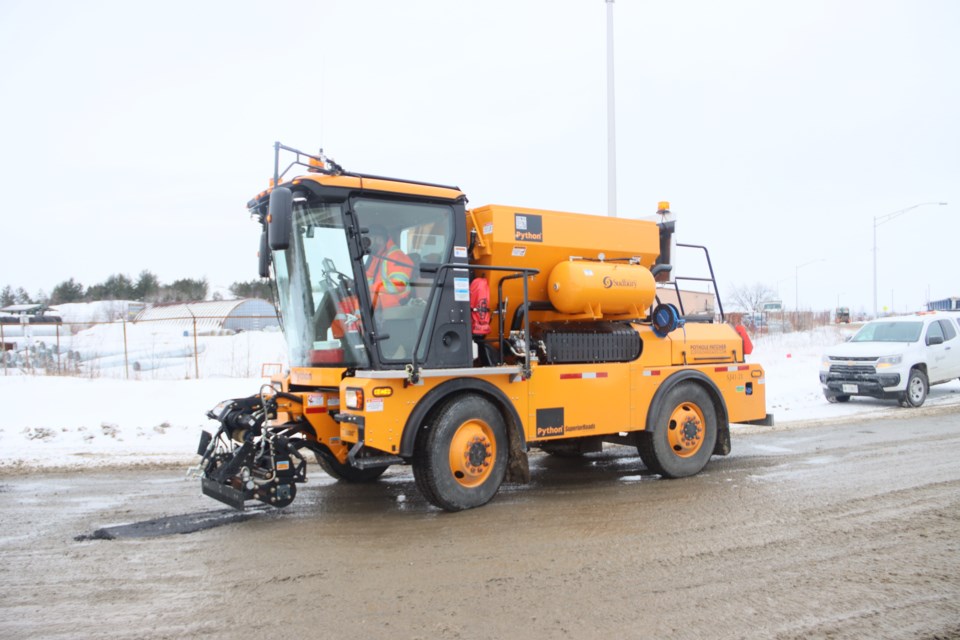The much talked-about Python 5000 pothole-filling machine is expected to be visible on city streets a lot more now that the weather has warmed up.
The $555,000 machine arrived in Greater Sudbury on Nov. 21 only two months after city council approved the purchase, and staff members were quickly trained on it.
The machine is operated by a lone staff member within its cab who drives up to a pothole, air-blasts debris, drops asphalt into the hole, spreads it out and compresses it down using controls within the machine. A video of the Python 5000 in operation can be found here.
It began being put to work in late January, but staff soon saw its limitations in temperatures of approximately -10 C and colder. As such, it hasn’t been deployed very often.
Last month, city Linear Infrastructure Services director Brittany Hallam told Sudbury.com that the machine appears slower to fill potholes in a single area than a crew, but that this shortcoming is more than accounted for by the fact it requires one operator whereas a traditional pothole crew is made up of four to five members.
“It seems to do a reasonably good job,” city general manager of Growth and Infrastructure Tony Cecutti said earlier this week.
“It requires a lot of care. We’ve got a team that is going to clean it every morning and every afternoon after it’s finished their activities to make sure it’s available for work the next day.”
Now that the temperatures have improved, he said the machine will be out in full force on city streets – namely, four-lane roads where vehicles can get around it safely.
Traditional pothole crews will be used for other roads because they’re equipped with flag people to divert traffic around their operations. The goal is to maintain a one-person operation with the Python 5000.
“It’s a complex piece of equipment and I’m really looking forward to seeing how good a job it can do,” Cecutti said.
Although the city hasn’t had a clearly defined pothole season in recent months due to an influx of freeze-thaw days in December unearthing the rim-bending road obstacles, the road craters have become more visible as the temperatures have risen.
While Cecutti said the potholes aren’t as bad as they were in 2019, they’re worse this spring than they have been since that time. City crews are doing what they can to plug road holes with “throw-and-go” temporary fillers, he said, adding that they’re a necessary stop-gap until such time as they can be rehabilitated in a more permanent manner when temperatures get warmer.
For now, he encourages motorists to exercise caution and avoid swerving out of the way of potholes.
“The best behaviour of motorists is not to alter their lane but to slow down appropriately.”
Potholes can be reported to the city by phoning 311 or using the online portal at 311.greatersudbury.ca.
Tyler Clarke covers city hall and political affairs for Sudbury.com.
